Amphorateuthis alveatus
Richard E. Young, Michael Vecchione, and Clyde F. E. RoperIntroduction
Four specimens of Amphorateuthis alveatus (first known as New Genus sp. A on this page) were captured off the west coast of Africa in 1964 by the R/V ANTON BRUUN. These mature or nearly mature individuals, which represent a new species, are very unlike any known genus in the Heteroteuthinae and are placed in a new genus.
Brief diagnosis:
A heteroteuthin with ...
- elongate suckers in numerous series on arms II and IV in mature males.
Characteristics
- Arms
- Arms II-IV in mature males highly modified.
- Arms IV with 10 or more irregular series of elongate suckers becoming 4-5 series of normal suckers at arm tip.
- Arms III each with six suckers biserially arranged (suckers well separated and each just slightly lateral to midline) in proximal half of arm and single, very large, elongate sucker on distal half of arm. Arm tip bare. Broad aboral flap (=keel?) present on distal third of arm.
- Arms II with two series of normal suckers proximally becoming numerous series of elongate suckers distally to form proximal brush-like set of suckers. Distal brush-like set of elongate suckers in numerous series separate from the proximal set by short, bare region of arm. Elongate suckers continue to tip. Suckers of distal set larger than proximal set.
- Elongate suckers with nearly tubular, smooth inner rings.
- Lateral elongate suckers on arms II and IV with much longer stalks than medial suckers.
- Arms I short, with normal suckers in two series.
Figure. Oral view of the arm crown of A. alveatus, holotype. Tentacles removed for clarity. Drawing by Carolyn Gast.
Figure. Aboral view near the tip of arm II of A. alveatus showing elongate suckers and stalks and nearly tubular inner rings, holotype. Photograph by R. Young.
- Female with short, relatively simple arms
- Arms I broken off, structure unknown.
- Arms II with biserial suckers; large, distal, aboral flap (=keel?).
- Arms III with biserial suckers proximally, distal half of arm bare; large, distal aboral flap (=keel?).
- Arms IV with two series of suckers throughout, well developed lateral membrane joined to ventral side of arm IV well distal to basal suckers.
- Tentacles
- Clubs with numerous irregular sucker series. Basal suckers larger (ca. proximal 10 transverse rows with suckers uniformly larger than more distal suckers).
- Tentacle-organ present, broadly overlaps sucker-bearing region of club.
- Funnel
- Funnel component of locking-apparatus with straight, elongate groove and deep anterior pit. Mantle locking apparatus with elongate ridge and large anterior knob.
- Mantle
- Dorsal mantle broadly fused with head. Ventral mantle margin extends beneath head nearly to level of anterior edge of eyes. Ventral shield extends over 90% of ventral mantle.
- Fins
- Fins large; posterior lobes, with ca 90° posteromedial angle, extend to or well beyond posterior end of mantle.
Figure. Oral view of arms II-IV of the female of A. alveatus.
Figure. Oral view of the right tentacular club of A. alveatus, holotype. Top - Photograph by R. Young. Bottom - Drawing by Carolyn Gast/Keiko Hiratsuka Moore
Figure. Funnel/mantle locking-apparatus of A. alveatus, holotype. Top - Longitudinal section through the mantle adjacent to the mantle lock showing the large knob at the anterior end in side view. Bottom - Frontal view of the funnel component showing the slender posterior grove and the deep anterior pit. Magnification of the two views differ slightly. Photographs by R. Young.
Figure. Two views of A. alveatus. Left - Ventral view showing large shield, paratype no. 1, mature male. Right - Dorsal view showing the broad dorsal head-mantle fusion and the shape of the fins, paratype no. 2, mature (?) male.
Comments
More details of the description can be found here.
The bizarre sexual modifications of the arms in mature males distinguishes A. alveatus from all other members of the subfamily. The elongate suckers and the large anterior extension of the ventral mantle is similar to that of Nectoteuthis pourtalesii. The latter species, however, has elongate suckers in two series on all arms. In addition, the suckers of N. pourtalesii lack long stalks, the mantle and head in N. pourtalesii are not fused and the fins do not extend to the posterior end of the mantle. Among the other genera, A. alveatus is most similar to Iridoteuthis iris in the placement and shape of the fins, the broad dorsal fusion of the head and mantle, and the presence of large aboral flaps on some arms. The modifications of the arms in mature males and females, however, are entirely different between these species.
Distribution
Type locality: Indian Ocean off the west coast of Tanzania at 06°51'S, 39°54'E where the holotype and paratype no. 1 were taken. Paratype no. 3 was taken virtually the same locality in a 40 ft. trawl that fished to 100 m depth, presumably a bottom trawl as the mantle cavity was filled with calcareous sand. Paratype no. 2 was taken nearby at 06°48'S, 39°51'E.
References
Young, R. E., M. Vecchione and C. F. E. Roper. 2007. A new genus and three new species of decapodiform cephalopods (Mollusca: Cephalopoda). Rev. Fish. Biol. Fisheries, 17: 353-365.
Title Illustrations

| Scientific Name | Amphorateuthis alveatus |
|---|---|
| Location | Indian Ocean off Tanzania |
| Specimen Condition | Preserved |
| Sex | Male |
| Life Cycle Stage | Mature |
| View | Side |
| Size | 14 mm ML |
| Collection | nmnh 1084281 |
| Type | Paratype |
| Image Use |
 This media file is licensed under the Creative Commons Attribution-NonCommercial License - Version 3.0. This media file is licensed under the Creative Commons Attribution-NonCommercial License - Version 3.0.
|
| Copyright |
©

|
| Scientific Name | Amphorateuthis alveatus |
|---|---|
| Location | Indian Ocean off Tanzania |
| Specimen Condition | Preserved |
| Sex | Female |
| Life Cycle Stage | Immature |
| View | Side |
| Size | 14 mm ML |
| Collection | nmnh 1084283 |
| Type | Paratype |
| Image Use |
 This media file is licensed under the Creative Commons Attribution-NonCommercial License - Version 3.0. This media file is licensed under the Creative Commons Attribution-NonCommercial License - Version 3.0.
|
| Copyright |
©

|
About This Page

University of Hawaii, Honolulu, HI, USA

National Museum of Natural History, Washington, D. C. , USA

Smithsonian Institution, Washington, D. C., USA
Page copyright © 2015 , , and
 Page: Tree of Life
Amphorateuthis alveatus .
Authored by
Richard E. Young, Michael Vecchione, and Clyde F. E. Roper.
The TEXT of this page is licensed under the
Creative Commons Attribution-NonCommercial License - Version 3.0. Note that images and other media
featured on this page are each governed by their own license, and they may or may not be available
for reuse. Click on an image or a media link to access the media data window, which provides the
relevant licensing information. For the general terms and conditions of ToL material reuse and
redistribution, please see the Tree of Life Copyright
Policies.
Page: Tree of Life
Amphorateuthis alveatus .
Authored by
Richard E. Young, Michael Vecchione, and Clyde F. E. Roper.
The TEXT of this page is licensed under the
Creative Commons Attribution-NonCommercial License - Version 3.0. Note that images and other media
featured on this page are each governed by their own license, and they may or may not be available
for reuse. Click on an image or a media link to access the media data window, which provides the
relevant licensing information. For the general terms and conditions of ToL material reuse and
redistribution, please see the Tree of Life Copyright
Policies.
- First online 27 August 2005
- Content changed 04 April 2008
Citing this page:
Young, Richard E., Michael Vecchione, and Clyde F. E. Roper. 2008. Amphorateuthis alveatus . Version 04 April 2008 (under construction). http://tolweb.org/Amphorateuthis_alveatus/52334/2008.04.04 in The Tree of Life Web Project, http://tolweb.org/




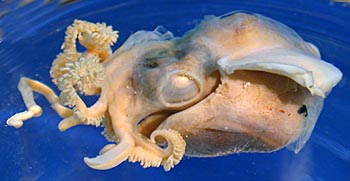
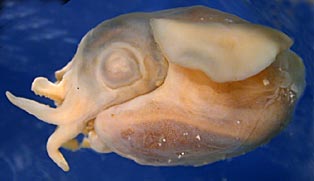
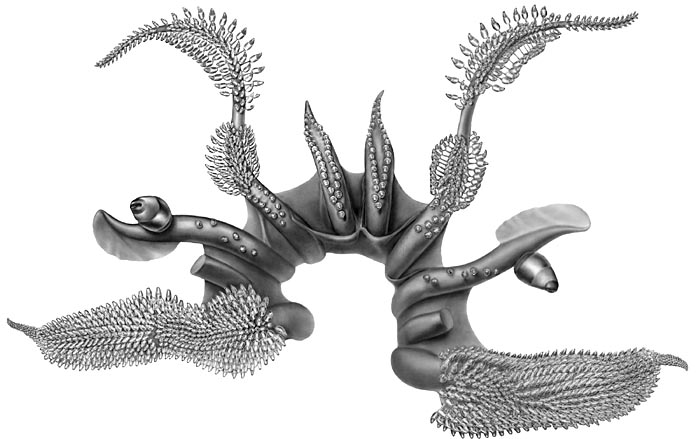
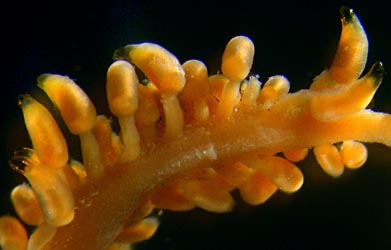
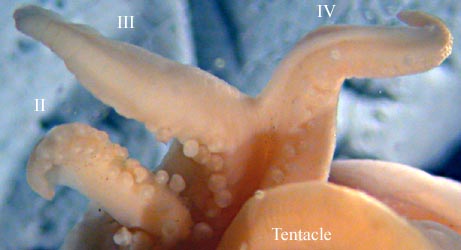
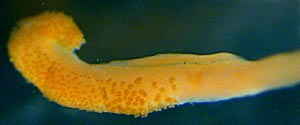

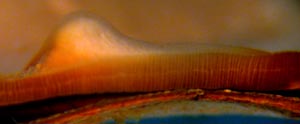
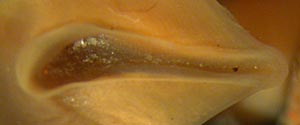
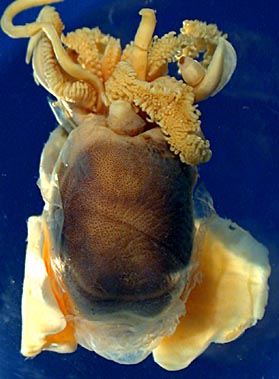
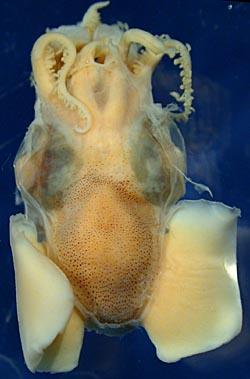
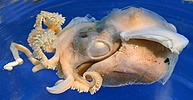
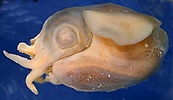


 Go to quick links
Go to quick search
Go to navigation for this section of the ToL site
Go to detailed links for the ToL site
Go to quick links
Go to quick search
Go to navigation for this section of the ToL site
Go to detailed links for the ToL site